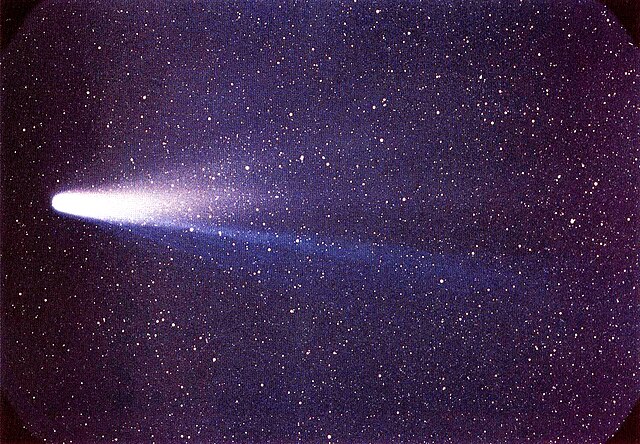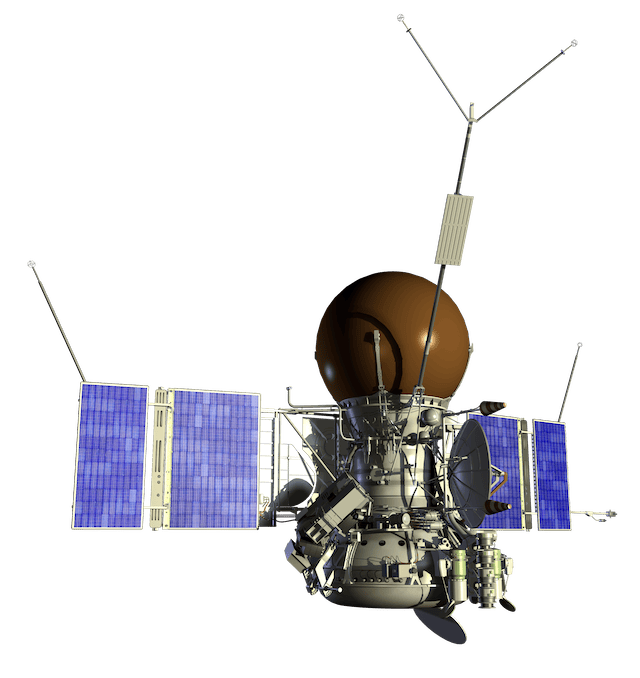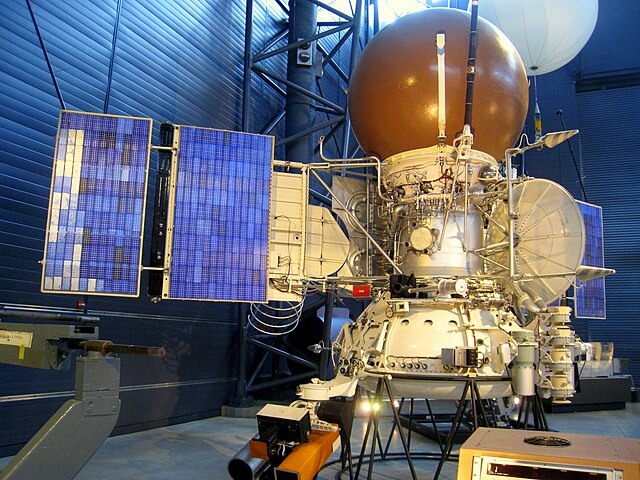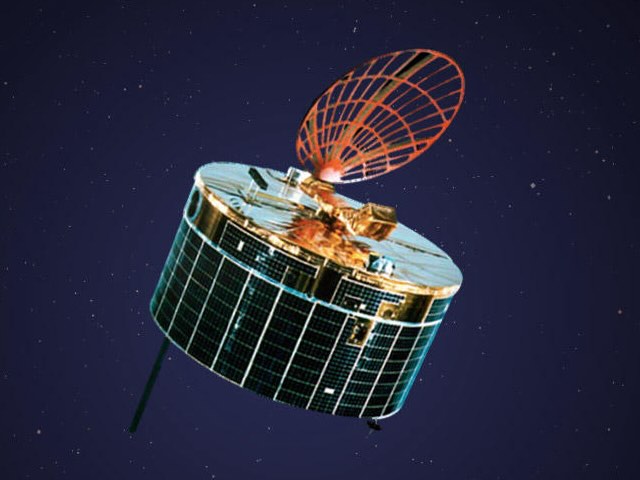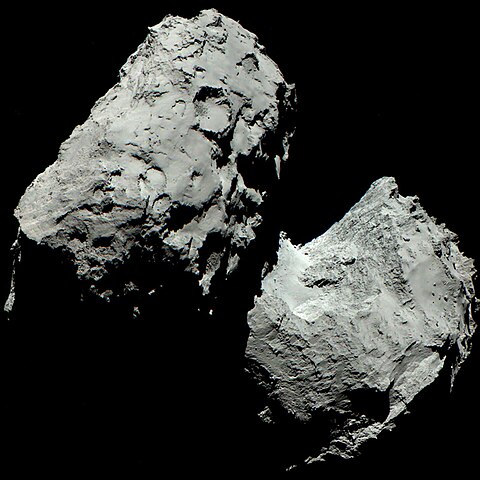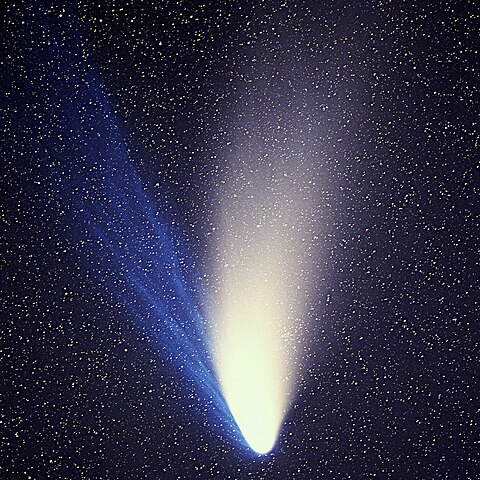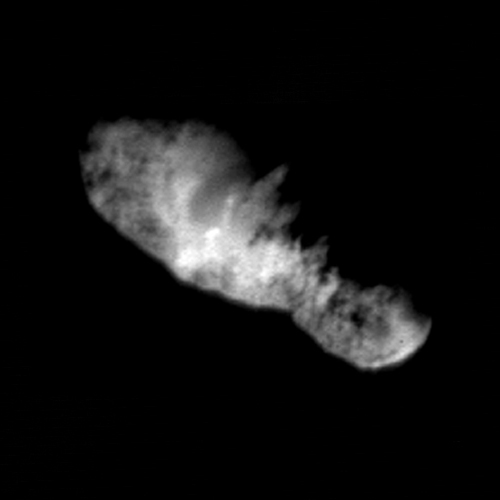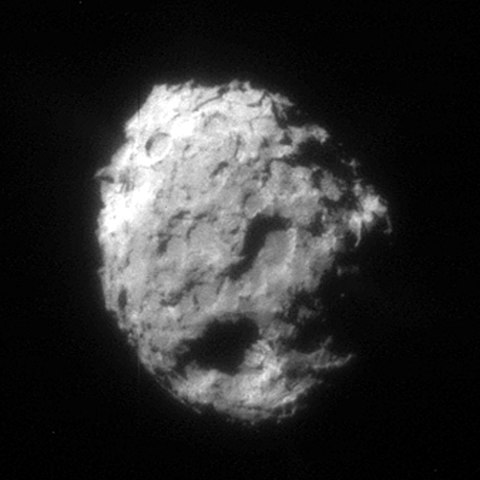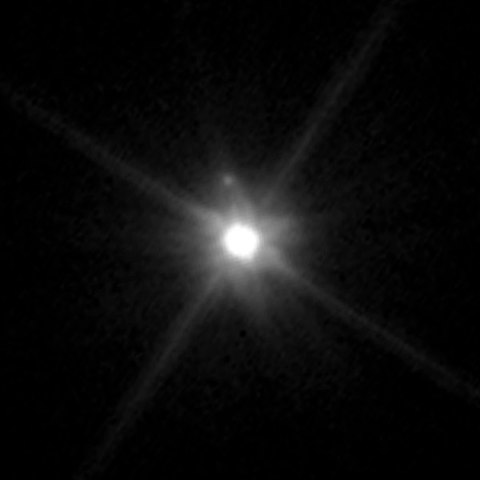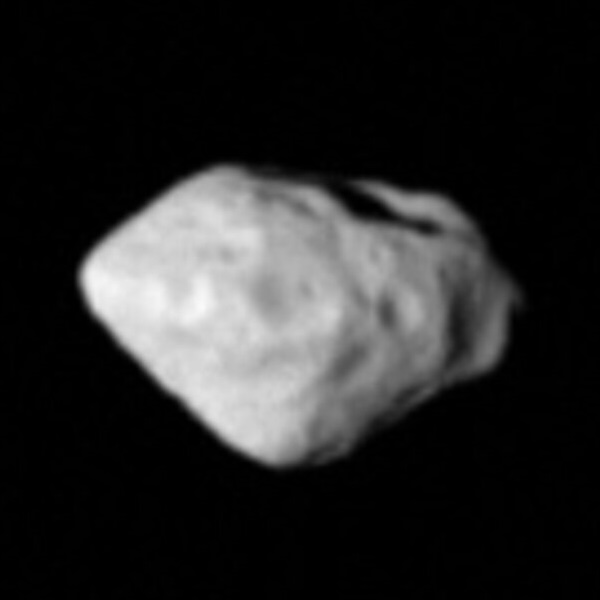1 day / second
0.5 AU
Halley's Comet (1P/Halley)
Comet
A famous periodic comet that returns to the inner Solar System every 76 years, leaving a distinctive trail of dust and gas visible from Earth as it is heated by the Sun.
Key Facts
learn more | Wikipedia |
mass | 2.2000e+14 kg |
radius | 5.5 km |
hill radius | 295.169 km |
semi-major axis | 17.737 AU |
eccentricity | 0.967 |
inclination | 161.96º |
longitude of the ascending node | 59.396º |
argument of periapsis | 112.05º |
orbital period | 74.7 years |
discovery date | First recorded observation in 239 BCE |
discovered by | Edmond Halley in 1758 recognized it as periodic, though it had been observed for centuries |
name origins | Named after Edmond Halley |
dimensions | 11 kilometers in diameter |
albedo | 0.04 |
material composition | Icy-rocky nucleus (specific composition not provided in data) |
density | 850 kg/m³ |
Spacecraft Visits
Vega 1
Flyby
Launched in 1984, visited in 1986
Vega 1 approached within 8,890 kilometers of Halley's Comet on March 6, 1986, capturing the first close-up images of the comet's nucleus and analyzing its composition using a suite of scientific instruments.
Vega 2
Flyby
Launched in 1984, visited in 1986
Vega 2 encountered Halley's Comet on March 9, 1986, passing within 8,030 kilometers of the nucleus and capturing detailed images and data about the comet's composition and activity.
Sakigake
Flyby
Launched in 1985, visited in 1986
Sakigake made a distant flyby of Halley's Comet on March 11, 1986, passing at a distance of about 7 million kilometers while measuring the comet's plasma and magnetic field environment.
Giotto
Flyby
Launched in 1985, visited in 1986
The spacecraft Giotto encountered Halley's Comet on March 13, 1986, coming within 596 kilometers of the nucleus and capturing the first detailed photographs of a comet's core despite sustaining damage from dust impacts.
